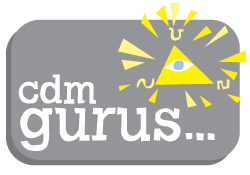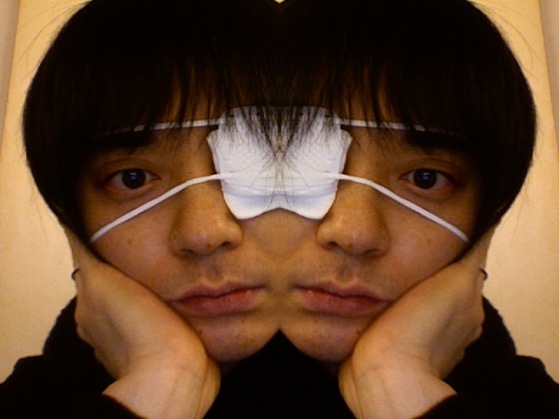 Cornelius’ Sensuous Synchronized tour, with The Cornelius Group, has been stunning American audiences over the past year. I got to a chance to talk to Cornelius, aka Keigo Oyamada, following the New York close to his American trip. The show blew my mind: constant visual stimulation, earnest performances (including audience interaction on Theremin), and perfectly-synced (true to the name) visuals that made the music into a dreamscape you wanted to live in all night. The interview was via email, though, and somehow I got strange and wordy with my questions — I think because I got excited. Cornelius, true to the sharp-edged economy of his music, responded in minimalistic fashion. So, given that too many useless words tend to surround music in general, I’ll be brief:
Cornelius’ Sensuous Synchronized tour, with The Cornelius Group, has been stunning American audiences over the past year. I got to a chance to talk to Cornelius, aka Keigo Oyamada, following the New York close to his American trip. The show blew my mind: constant visual stimulation, earnest performances (including audience interaction on Theremin), and perfectly-synced (true to the name) visuals that made the music into a dreamscape you wanted to live in all night. The interview was via email, though, and somehow I got strange and wordy with my questions — I think because I got excited. Cornelius, true to the sharp-edged economy of his music, responded in minimalistic fashion. So, given that too many useless words tend to surround music in general, I’ll be brief:
We all love Cornelius.
The Sensuous Synchronized tour is one of the best audiovisual shows on the planet.
When I feel artistically dry, I watch these videos and feel wonderful.
Cornelius reminds me why I do what I do.
The best way to get Cornelius and share him with friends is to watch the videos.
Go buy the album.
(For more on the visuals in the Cornelius tour, see Momo’s take and discussion on Create Digital Motion)
Now here’s what Cornelius had to say, with some of those videos mixed in because they’re worth countless words:
I see you’re still described by some as a “pop” artist — which maybe doesn’t mean the same thing in the US, or doesn’t mean anything. How would you describe your musical language now?
Anything is ok.
Listening to your more recent albums, you have a really extraordinary sense of phrase and rhythm — particularly your approach to silence. Can you describe your sensibility in terms of silence?
[Cornelius responded silently.]
Your work with video, and particularly Koichiro Tsujikawa, has been really striking. Can you talk about what working across media has meant for your music?
For the live performance, it’s an important part as there’s not only the sound in live shows but the visual aspect. By creating visuals I think it helps to understand more about the music as my songs are in Japanese.
There’s an almost hypnotic, meditative quality to the lyrics. Did you find you were reflecting on certain themes for your most recent work?
I tried to do it on purpose in a minimal way where the words are rhyming and changing a bit by bit. By the time someone realizes, they end up somewhere different than where they begun. Although you may not understand the lyrics it sounds like the sounds have fulfilled what I tried to do.
What were some of the artists — Japanese, American, or otherwise — who influenced your musical development? Who are you listening to now?
Looking at my latest play list on iTunes… I’ve listened to the theme song of Dragonball, Doveman, Steve Jansen, Petra Haden…
You’ve managed to continuously reimagine your sound, from Shibuya-kei to the release of Point and onward. Would it be fair to say “Point” was a point of departure?
The recording style has changed from Fantasma to Point but it’s the same person doing it… The styles were different before Fantasma too so it’s hard to say. Everything’s somewhat of a proto-type of the other…
There’s an almost robotic quality to the way some of these ideas are assembled. I saw in an old interview you once compared your music to a Transformer. Is there a sense of assembling music like machinery?
That’s probably an old interview during the Fantasma days… I probably mentioned that then, about when adding/pasting sounds to make music.
How do you work in the studio and on the road; what tools do you use?
I have my own studio that I go to Mon through Fri. There’s not really a specific method but I pick up an instrument and record my ideas that I’ve come up.
I don’t/can’t record on the road as touring is enough work on its own.
On the new EP, you’re remixed by Prefuse 73 and The Books. They feel like really sympathetic artists aesthetically. How did you come to make that connection?
I knew Petra’s music from the past, but she happened to come see my show in LA… I saw her website and found that she did an a cappella version of Journey’s “Don’t Stop Believing” and of Michael Jackson and liked it and asked her to do a cover version instead of a remix…
The Books — This is an artist that I really liked and asked them to do it.
Prefuse — My label asked me about Prefuse and I had liked his works from before and so, it happened like that.
With the Web, your music is reaching a new audience, your videos are spreading on YouTube and such to American audiences who are still discovering your work. Obviously, you’ve got a huge US following. Has the Web helped that to happen, and does it hold promise for a more global audience for music in general?
Yes.
Yep. That sums it up.








